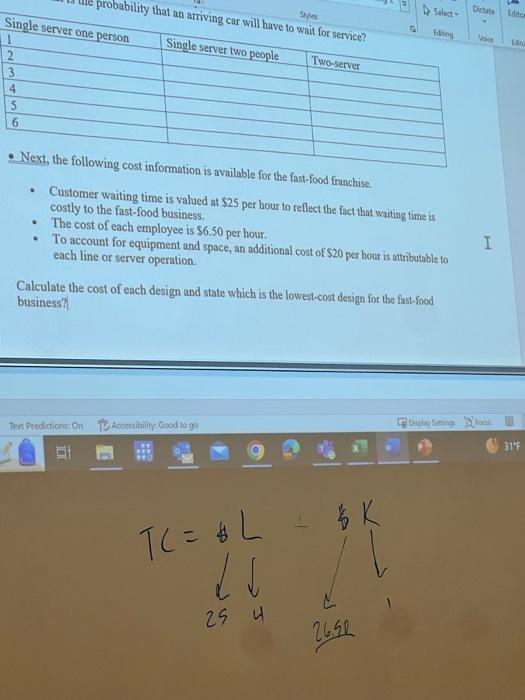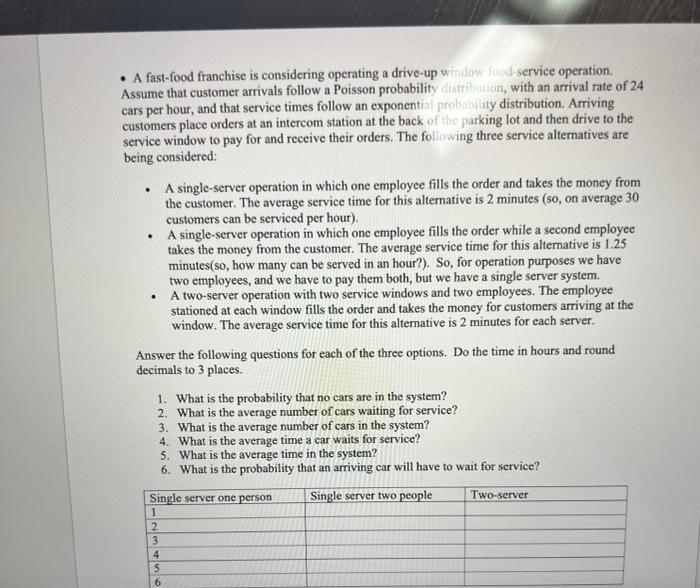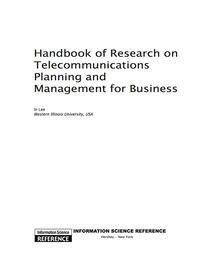- Customer waiting time is valued at $25 per hour to reflect the fact that waiting time is costly to the fast-food business. - The cost of each employee is $6.50 per hour. - To account for equipment and space, an additional cost of $20 per hour is attributable to each line or server operation. Calculate the cost of each design and state which is the lowest-cost design for the fast-food business? - A fast-food franchise is considering operating a drive-up window fou-service operation. Assume that customer arrivals follow a Poisson probabilify disirni non, with an arrival rate of 24 cars per hour, and that service times follow an exponential probability distribution. Arriving customers place orders at an intercom station at the back of the parking lot and then drive to the service window to pay for and receive their orders. The following three service alternatives are being considered: - A single-server operation in which one employee fills the order and takes the money from the customer. The average service time for this alternative is 2 minutes (so, on average 30 customers can be serviced per hour). - A single-server operation in which one employee fills the order while a second employee takes the money from the customer. The average service time for this alternative is 1.25 minutes(so, how many can be served in an hour?). So, for operation purposes we have two employees, and we have to pay them both, but we have a single server system. - A two-server operation with two service windows and two employees. The employee stationed at each window fills the order and takes the money for customers arriving at the window. The average service time for this altemative is 2 minutes for each server. Answer the following questions for each of the three options. Do the time in hours and round decimals to 3 places. 1. What is the probability that no cars are in the system? 2. What is the average number of cars waiting for service? 3. What is the average number of cars in the system? 4. What is the average time a car waits for service? 5. What is the average time in the system? 6. What is the probability that an arriving car will have to wait for service? - Customer waiting time is valued at $25 per hour to reflect the fact that waiting time is costly to the fast-food business. - The cost of each employee is $6.50 per hour. - To account for equipment and space, an additional cost of $20 per hour is attributable to each line or server operation. Calculate the cost of each design and state which is the lowest-cost design for the fast-food business? - A fast-food franchise is considering operating a drive-up window fou-service operation. Assume that customer arrivals follow a Poisson probabilify disirni non, with an arrival rate of 24 cars per hour, and that service times follow an exponential probability distribution. Arriving customers place orders at an intercom station at the back of the parking lot and then drive to the service window to pay for and receive their orders. The following three service alternatives are being considered: - A single-server operation in which one employee fills the order and takes the money from the customer. The average service time for this alternative is 2 minutes (so, on average 30 customers can be serviced per hour). - A single-server operation in which one employee fills the order while a second employee takes the money from the customer. The average service time for this alternative is 1.25 minutes(so, how many can be served in an hour?). So, for operation purposes we have two employees, and we have to pay them both, but we have a single server system. - A two-server operation with two service windows and two employees. The employee stationed at each window fills the order and takes the money for customers arriving at the window. The average service time for this altemative is 2 minutes for each server. Answer the following questions for each of the three options. Do the time in hours and round decimals to 3 places. 1. What is the probability that no cars are in the system? 2. What is the average number of cars waiting for service? 3. What is the average number of cars in the system? 4. What is the average time a car waits for service? 5. What is the average time in the system? 6. What is the probability that an arriving car will have to wait for service








